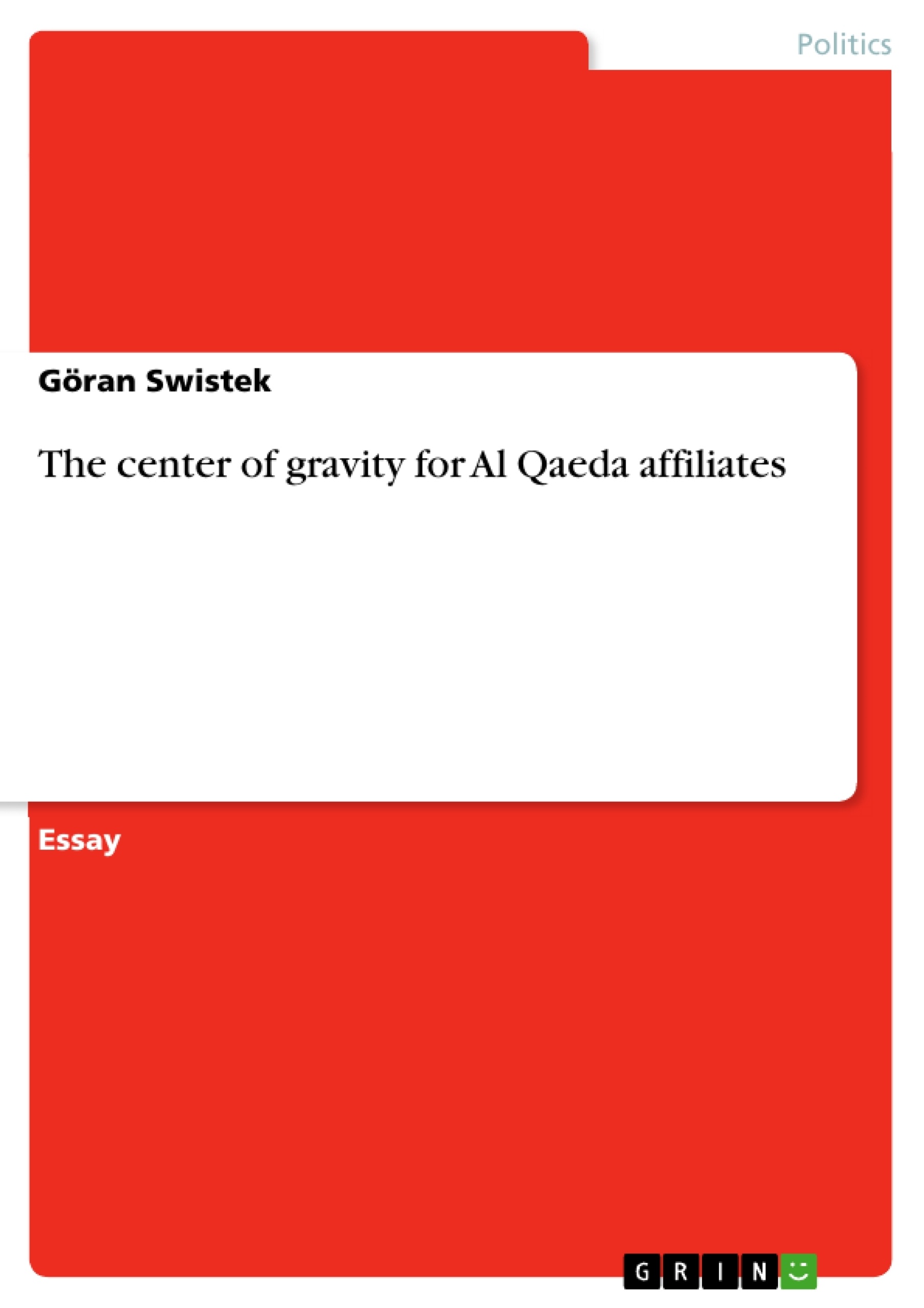The center of gravity paradigm created and published by Carl von Clausewitz in his famous study about the appearance of war is nowadays still widely used to describe the core incitements and driving factors of warring factions, political parties, militias and even terrorist groups. In a short summary this military term of a center of gravity is defined as the one or few main forces where a party in a conflict drives its willpower and its strength from. It is a common element amongst the members and supporters of this group and with reference to Clausewitz’s study, it is this key element the opponent needs to identify and to overcome in order to break the willpower of the party and to finally conquer them. For that reason various studies have been undertaken und research has been performed with regards to the center of gravity in warfare as well as the center of gravity for terrorist groups and esp. for Al Qaeda.
In the case of Al Qaeda most completed studies and published documents agreed to the point that the ideology preached by the core leaders of the network is the key element, where their followers draw their support and willpower from. At the same time Al Qaeda these days transformed itself to a loose network with just a common brand name and ideology, but without much central guidance or command. Numerous groups throughout all parts of world emerge and entitle themselves with the name Al Qaeda or Al Qaeda affiliated. Often there are no or just minor links to the former core leadership of Al Qaeda.
For that reason it seems, that the network called Al Qaeda with most of its global affiliates is not more a strict hierarchical structured group, nor is it a self-contained network anymore with its origin in the mountain region of the Afghan-Pakistan (AfPak) border area. Al Qaeda seems to have many different appearances. Therefore the underlying hypothesis of this essay is that beside the remaining core of Al Qaeda in the AfPak region, the name Al Qaeda is nowadays used as a corporate name of different local or regional acting terrorist groups in order to provide a powerful proof of their willingness and capability.
In that line the outcome of the hypothesis argues that the CoG for Al Qaeda affiliates is derived from their own and individual domestic or regional issues and interests as well as their regional supremacy.
Inhaltsverzeichnis (Table of Contents)
- Introduction
- The center of gravity in warfare
- Al Qaeda and its overarching ideology
- Case studies
- Al Shabaab, Somalia
- Al Qaeda in the Islamic Maghreb (AQIM)
- Jama'atu Ansarul Musilimina fi Biladin Sudan (Ansarul)
- Conclusion
Zielsetzung und Themenschwerpunkte (Objectives and Key Themes)
This essay analyzes the center of gravity of Al Qaeda affiliates and explores how it differs from the overarching ideology of the former core leadership. The primary objective is to investigate whether the ideology remains a crucial unifying element or serves merely as a corporate identity for regional groups.- The evolving nature of Al Qaeda as a decentralized network.
- The role of the center of gravity in understanding the motivations of Al Qaeda affiliates.
- The influence of local and regional issues on the center of gravity of Al Qaeda affiliates.
- The relationship between the overarching Al Qaeda ideology and the specific agendas of regional affiliates.
- The impact of the center of gravity concept on combating terrorism.
Zusammenfassung der Kapitel (Chapter Summaries)
- Introduction: This chapter provides a background on the concept of the center of gravity and how it relates to Al Qaeda affiliates. It highlights the shift from a centralized network to a loose network with regional affiliates.
- The center of gravity in warfare: This chapter presents the original concept of the center of gravity as developed by Carl von Clausewitz. It explains its application in military strategy and how it relates to the study of terrorism.
- Al Qaeda and its overarching ideology: This chapter examines the core ideology of Al Qaeda and its significance in uniting its diverse affiliates. It discusses the ideology's influence on the group's objectives and actions.
- Case studies: This chapter presents case studies of three regional Al Qaeda affiliates: Al Shabaab in Somalia, Al Qaeda in the Islamic Maghreb (AQIM), and Jama'atu Ansarul Musilimina Fi Biladis Sudan in Nigeria (Ansarul). It examines their individual center of gravity and its connection to the overarching ideology.
Schlüsselwörter (Keywords)
The key focus of this essay lies on the concept of the center of gravity, Al Qaeda affiliates, regional terrorism, overarching ideology, local and regional issues, and the evolution of Al Qaeda as a network. The study explores the relationship between these elements in understanding the motivations and strategies of Al Qaeda affiliates.- Citation du texte
- Dipl. pol., MCGI Göran Swistek (Auteur), 2013, The center of gravity for Al Qaeda affiliates, Munich, GRIN Verlag, https://www.grin.com/document/230342



